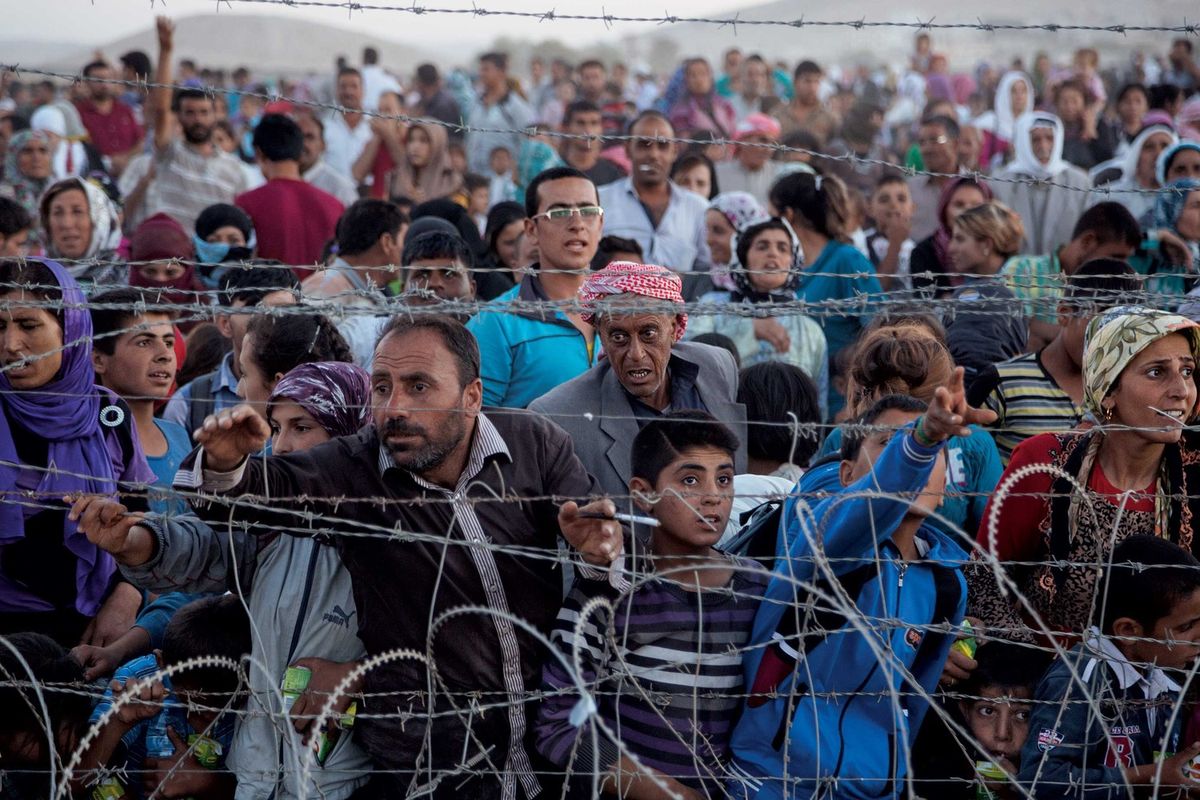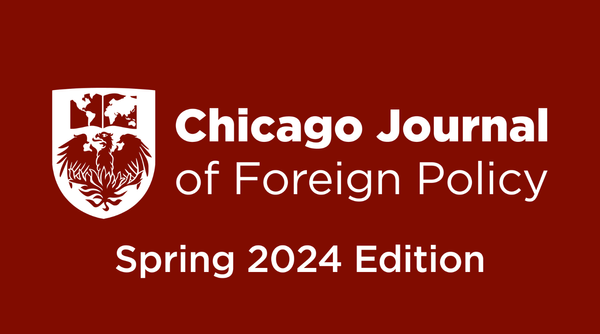Refugees and Stateless Persons in the Case of the Syrian Crisis

by JON HOFFMAN, George Mason University ’19
Introduction: “Stateless” vs “Refugee” vs “Stateless Refugee”
The issues of statelessness and refugees represent serious challenges to the global community, with wide-reaching repercussions that affect both developed and developing nations. More than 12 million people around the world are considered stateless, while approximately 65 million are considered refugees.[1] In order to gain a holistic understanding of the two phenomena – and where they intersect – it is necessary to first define them. According to the United Nations, “stateless” refers to a person who is not considered as a national by any state under the operation of its law, while a “refugee” is a person who has fled his or her country owing to a well-founded fear of persecution, and ostensibly, once the threat has passed, can return to that country.[2] It is from these two working definitions that this analysis will examine the convergence of statelessness and refugee status into stateless refugees.
While the term “refugee” is generally well-understood and straightforward to most, “stateless” is more precarious due to the fact that it separates the individual from the nation-state. The root causes of statelessness can vary by context: the dissolution of a polity (like that of the Soviet Union in 1991), conflict and forced displacement, or the stripping of one’s nationality by their country’s government. This poses significant problems to peoples who fall under this category, because without a citizenship and nationality, they have no right to enter or live in any country.[3] In the modern world of the Westphalian nation-state, nationality is critical because the state affords all rights and protections: without citizenship, people are denied their basic rights of access to education, employment, health services, and so on, because they have no nation to secure those resources for them. Therefore, the continued centrality of state sovereignty guarantees the continued existence of stateless populations because citizenship is a purely domestic issue (there is no mechanism in international law to provide citizenship).[4]
Contextual Analysis: Stateless Refugees and the Syrian Crisis
The post-2011[5] Syrian crisis represents a context in which the concepts of refugeehood and statelessness have converged to produce stateless refugees. The background for this crisis lays in the 2011 Arab Uprising protests that swept from the Middle East to North Africa, most notably upheaving Tunisia, Egypt, Libya, Yemen, Bahrain, and Syria. Due to the intensity and prolongation of the conflict, roughly 5 million Syrians have fled into neighboring countries, over 1 million have fled to Europe, and over 6 million have been internally displaced.[6] What has gone largely unnoticed, however, are the increasing number of Syrian refugees who are already – or are becoming – stateless. While the plights of stateless Syrians and Syrian refugees are undoubtedly important, this analysis will focus on stateless refugees to fill gaps in the literature about the two.
There are three broad categories of people who are affected by statelessness related to the Syrian crisis: (1) ethnic Syrian families who have fled abroad, (2) Kurdish communities that were stateless prior to the 2011 uprisings and who have fled abroad (or remained), and (3) Palestinian refugees within Syrian that have fled abroad. The diverging situations of Syrians who have fled abroad is also affected by the country they migrated to and that country’s citizenship laws and relations with Syria.
The first category are ethnic Syrians who have fled abroad seeking safety from the ongoing civil war. The first complication of statelessness concerns Syrian refugees giving birth abroad. Since 2011, more than 300,000 children have been born to ethnic Syrians in exile.[7] The UN Refugee Agency estimates 70% of these 300,000 Syrian refugee children are not registered at birth.[8] The reasons for not registering these births vary by case: some have lost their documentation needed for registration either while fleeing from the conflict or if it was destroyed, while some people have emigrated illegally and do not want to approach the authorities for risk of deportation. The UNRA estimated in 2016 that there were roughly 30,000 stateless Syrian children in Lebanon and 60,000 in Turkey; the agency also estimated that over 8,000 minors have emigrated out of Syria without an adult, further increasing their chances of statelessness if no credible linkage can be made to a Syrian father.[9] This could result in these children being denied basic public services in the countries they now reside in, or be denied entry back into Syria.
The significance of extant, physical documents in the discussion of stateless refugees warrants its own analysis. The thorough destruction of civilian property during the Syrian civil war did not spare the many documents stored in individuals’ homes. Indeed, nearly 70% of ethnic Syrian refugees that have fled abroad lack basic identifying documents, rendering them incapable of proving their Syrian citizenship.[10] Many, too, have lost their documents while journeying to neighboring countries or to Europe. Syrians lacking identification documents have thus fled abroad with no paperwork, which means they are reluctant to formally register as refugees upon arrival. This inability to prove Syrian heritage, in turn, heightens their risk of becoming formally stateless.[11] Another issue when it comes to documents – specifically in the case of those of have fled to Turkey – is language barriers. Syrians speak Arabic and use the Arabic alphabet, while Turks speak Turkish and use an adaptation of the Latin alphabet. This can pose serious problems when translating names or registering the names of newborn Syrian infants into Turkish and vice-versa: the “Turkisation” of Arab names can cause various spelling mistakes and could potentially cause future problems when these children or individuals are trying to substantiate their link to their Syrian father.[12]
Compounding these issues is the Syrian state’s embrace of Jus Sanguinis – which confers the right of nationality by law by having one or more parents who are citizens of the state. Article 3 of the Syrian Nationality Act deems persons born outside of the country to be entitled to citizenship only if they are born to a Syrian father.[13] This is particularly problematic – around 25% of displaced Syrian families are single-mother households, as fathers have been routinely killed, imprisoned, disappeared, or forcibly recruited into the Army or opposition groups.[14]
Another issue for ethnic Syrians is the expiration of passports over the past seven years of conflict; Syrian passports last for only two years for men who have not completed compulsory military service.[15] Furthermore, once a child turns 15 they are required by the Syrian state to obtain a national identity card (Hawiya), which is virtually impossible during active conflict.[16] Sunni families associated – or perceived to be associated – with the opposition are in a particularly difficult position. Reports have surfaced of Syrian refugees stripped of their nationalities by the regime for being associated with the opposition, or having the renewal of their documents denied by the regime because they are “no longer citizens.”[17] While these are clearly politically-inspired actions by the regime to punish those who fled abroad, the refusal of document renewal and the stripping of certain people’s nationality serve as major hindrances for these individuals seeking aid or asylum abroad.
The next category focuses on two elements of the Syrian Kurdish community: the Ajanib, those registered as foreigners within the state, and the Maktoum, those completely unregistered in Syria. The Kurds – who believe themselves to be the descendants of the biblical Medes who arrived in the Middle East over 2,500 years ago – number roughly 25-30 million in total, with approximately 300,000 residing in Syria.[18] However, Syria has historically viewed the Kurds and the possibly of Kurdish separation as threats to the Syrian state, and have therefore stripped the majority of Syrian Kurds of their citizenship. For instance, the Syrian government passed Legislative Decree No. 93 in 1962, to strip nearly to 120,000 Syrian Kurds of their nationality – rendering them stateless – when they couldn’t “prove” they had been living in Syria since 1945.[19] A large number of these stateless Kurds fled abroad, particularly to the Kurdish region of Iraq and, to a lesser extent due to persistent discrimination, the Kurdish region of Turkey.
The last primary category of stateless refugees in the Syrian context are Palestinians who have fled – since 1948 – to Syria seeking refuge. At the onset of the 2011 Syrian uprising, over 500,000 Palestinian refugees had registered with the United Nations in Syria, with “tens of thousands” unregistered (registration is not mandatory).[20] A large portion of the Syrian-based Palestinian community have fled abroad, putting their already-precarious legal status further in question (particularly for those who were not registered as Palestinian refugees). Syrian-living Palestinians – who are already stateless – that have fled abroad face the risk of not being able to properly identify themselves or their potential offspring, either within the countries they are currently residing or if they attempt to return to Syria.
While it is not a primary category of stateless refugees, there remains one significant factor contributing to the phenomenon: extremist actors operating inside Syria. After conquering new territory, the terrorist organization ISIS often destroyed citizen’s passports and legal records, and issued them a new ISIS identity card (effectively making them part of the Islamic State).[21] The destruction of these records effectively renders these civilians stateless. This situation is compounded for those who managed to escape ISIS-controlled territory, but now had no records/documents from proof of Syrian citizenship. Another issue is – since Syria practices patriarchal Jus Sanguinis –the raping of women or forced marriages by ISIS members and any subsequent births. This threat is very real, with reports estimating that ISIS has under their control more than 31,000 pregnant women who are being used to create the next generation of ISIS fighters.[22] These children would subsequently have no avenue through which to demonstrate that they are legitimate Syrians, particularly since many fighters among ISIS were foreign nationals, essentially rendering them stateless. Similarly, even if the father was Syrian, being able to trace the birth to a specific male after being raped is almost an impossible task.
Conclusion: Possible Solutions and the Road Forward
Moving forward, it is imperative that stateless persons – particularly stateless refugees – receive the same amount of attention and global support that refugees receive. Focusing solely on refugees distracts from the plight of stateless populations and arbitrarily divides the two into distinct “classes/categories” despite the fact that both find themselves in deeply similar situations: neither group has a nation to call home and both have essentially become foreigners.[23] Furthermore, stateless refugees are not always registered with the United Nations High Commissioner for Refugees (UNHCR) and are therefore excluded from the rights/provisions provided for refugees. This is true for programs on the state level as well. For example, the UK’s Syrian Vulnerable Persons Resettlement (VPR) program – through which the UK has pledged to accept 20,000 Syrian refugees – is focused exclusively on resettling Syrian nationals, and as such stateless persons who cannot prove that they are Syrian do not fall within its scope.[24]
In An Endless Quest for a Home: The Gap in Protection between Stateless Persons and Refugees, Allison Barlett outlines several possible solutions when approaching the issue of stateless refugees. Of these, there is one that stands out as the best option moving forward: the creation of an international citizenship system designed specifically to provide citizenship to refugees and the stateless through the distribution of international passports.[25] This solution is particularly important because it would allow a supranational body to transcend inter-state competition (and intra-state political issues) in order to ensure the protection of rights for those populations in need. To bypass the commonly-faced problem of losing documents, this new method of classification could utilize a biometric-based system stored digitally with international oversight, thereby circumventing both the risk of losing documents and the risk of regimes manipulating citizenship to their own benefit. A biometric-based system of identification would also aid states politically in admitting refugees and stateless persons into their countries for humanitarian purposes, bypassing the oft-levied criticism of pro-refugee immigration policies that “we don’t know who we’re letting in”. Until provisions like this are implemented on a global scale, stateless persons and stateless refugees will continue to be unable to access the basic public goods they need, from security to public services, to lead dignified lives.
Works Cited
[1] UNHCR ACTION To ADDRESS STATELESSNESS – A STRATEGY NOTE, UNHCR
Division of International Protection, 4 (March 2010), available at http://www.Unhcr.org/refw orld/pdfid/4b9e0c3d2.pdf.
[2] United Nations High Commissioner for Refugees (UNHCR), Handbook on Protection of Stateless Persons,
2014, available at: http://www.refworld.org/docid/53b676aa4.html, para. 23.
[3] Peter van Krieken, Disintegration and Statelessness, 12 Neth. Q. Hum. Rts. 23, 28 (1994).
[4] Allison Bartlett, An Endless Quest for a Home: The Gap in Protection between Stateless Persons and Refugees, 33 Immigr. & Nat’lity L. Rev. 445 (2012)
[5] Some aspects of the Syrian stateless refugee phenomenon precede 2011, but the devolution of the country into civil war has greatly exacerbated the crisis.
[6] Albarazi, Zahra. “Understanding Statelessness in the Syria Refugee Context.” Institute on Statelessness and Inclusion, 2016, www.nrc.no/globalassets/pdf/reports/understanding-statelessness-in-the-syria-refugee-context.pdf.
[7] Albarazi, Zahra. “Understanding Statelessness in the Syria Refugee Context.” Institute on Statelessness and Inclusion, 2016, www.nrc.no/globalassets/pdf/reports/understanding-statelessness-in-the-syria-refugee-context.pdf.
[8] Gentleman, Amelia. “UN Refugee Agency Launches Global Campaign to End Statelessness.” The Guardian, Guardian News and Media, 4 Nov. 2014, www.theguardian.com/world/2014/nov/04/un-refugee-agency-global-campaign-statelessness.
[9] Osborne, Louise. “Refugee Crisis Creates ‘Stateless Generation’ of Children in Limbo.” The Guardian, Guardian News and Media, 27 Dec. 2015, www.theguardian.com/world/2015/dec/27/refugee-crisis-creating-stateless-generation-children-experts-warn.
[11] Albarazi, Zahra. “Understanding Statelessness in the Syria Refugee Context.” Institute on Statelessness and Inclusion, 2016, www.nrc.no/globalassets/pdf/reports/understanding-statelessness-in-the-syria-refugee-context.pdf.
[12] Albarazi, Zahra. “Understanding Statelessness in the Syria Refugee Context.” Institute on Statelessness and Inclusion, 2016, www.nrc.no/globalassets/pdf/reports/understanding-statelessness-in-the-syria-refugee-context.pdf.
[13] Davis, Lisa. “Why Are so Many Syrian Children Being Left Stateless?” OpenDemocracy, 1 July 2015, www.opendemocracy.net/5050/lisa-davis/why-are-so-many-syrian-children-being-left-stateless.
[14] Massie, Harriet. “Statelessness: a Forgotten Dimension of the Syrian Refugee Emergency.” LSE Human Rights, 28 July 2016, https://blogs.lse.ac.uk/humanrights/2016/08/01/statelessness-a-forgotten-dimension-of-the-syrian-refugee-emergency.
[15] “The Loss of a Nation: Thousands of Syrians Could Become Stateless.” The Economist, The Economist Newspaper, 23 Oct. 2014, www.economist.com/news/middle-east-and-africa/21627729-thousands-syrian-refugees-are-risk-having-no-recognised-nationality-loss-nation.
[16] Albarazi, Zahra. “Syrian Refugee or Stateless Refugee: The Challenges of Statelessness in Exile.” Middle East Centre, London School of Economics, 3 Oct. 2016, https://blogs.lse.ac.uk/mec/2016/09/26/syrian-refugee-or-stateless-refugee-the-challenges-of-statelessness-in-exile/.
[17] Albarazi, Zahra. “Syrian Refugee or Stateless Refugee: The Challenges of Statelessness in Exile.” Middle East Centre, London School of Economics, 3 Oct. 2016, https://blogs.lse.ac.uk/mec/2016/09/26/syrian-refugee-or-stateless-refugee-the-challenges-of-statelessness-in-exile/.
[18] Allison Bartlett, An Endless Quest for a Home: The Gap in Protection between Stateless Persons and Refugees, 33 Immigr. & Nat’lity L. Rev. 445 (2012)
[19] Davis, Lisa. “Why Are so Many Syrian Children Being Left Stateless?” OpenDemocracy, 1 July 2015, www.opendemocracy.net/5050/lisa-davis/why-are-so-many-syrian-children-being-left-stateless
[20] Albarazi, Zahra. “Understanding Statelessness in the Syria Refugee Context.” Institute on Statelessness and Inclusion, 2016, www.nrc.no/globalassets/pdf/reports/understanding-statelessness-in-the-syria-refugee-context.pdf.
[21] “The Loss of a Nation: Thousands of Syrians Could Become Stateless.” The Economist, The Economist Newspaper, 23 Oct. 2014, www.economist.com/news/middle-east-and-africa/21627729-thousands-syrian-refugees-are-risk-having-no-recognised-nationality-loss-nation.
[22] Cowburn, Ashley. “Isis’s Unborn Army: Thousands of Women Being Used to Breed ‘next Generation of Terrorist’.” The Independent, Independent Digital News and Media, 7 Mar. 2016, www.independent.co.uk/news/world/middle-east/over-31000-women-are-currently-pregnant-within-the-so-called-islamic-state-new-report-reveals-a6916756.html.
[23] Allison Bartlett, An Endless Quest for a Home: The Gap in Protection between Stateless Persons and Refugees, 33 Immigr. & Nat’lity L. Rev. 445 (2012)
[24] McGee, Thomas. “Statelessness Displaced: Update on Syria’s Stateless Kurds.” Institute on Statelessness and Inclusion, June 2016, www.institutesi.org/WP2016_02.pdf.
[25] Allison Bartlett, An Endless Quest for a Home: The Gap in Protection between Stateless Persons and Refugees, 33 Immigr. & Nat’lity L. Rev. 445 (2012)





